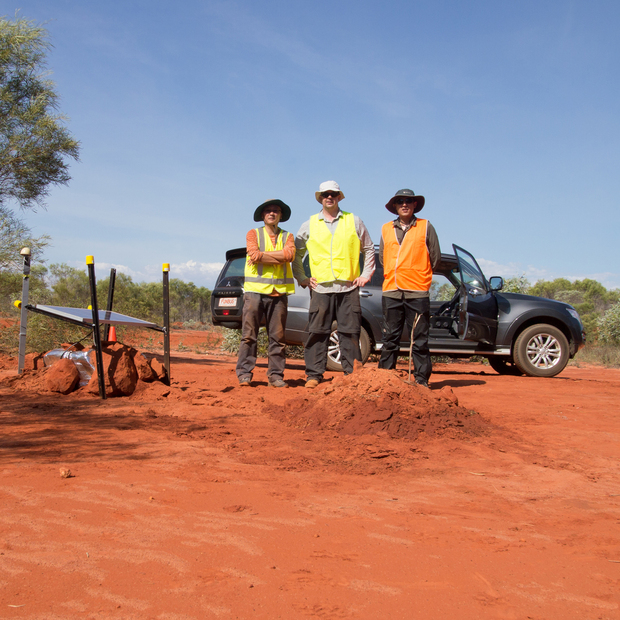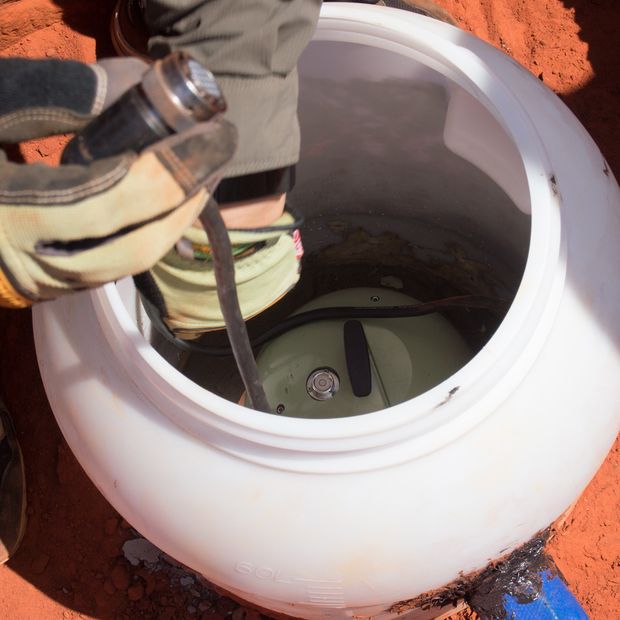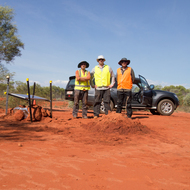Collaboration in project involves Chinese Academy of Sciences and Australian universities
| Date: | Thursday, 22 December 2016 |
|---|
As part of a joint project involving China to record seismic data from distant earthquakes, the Department of Mines and Petroleum (DMP) has installed a temporary monitoring station in Broome.

“Thanks to the Water Corporation granting access to its Broome North Wastewater Treatment Plant, scientists are now using a new site for seismic tomography to look deep inside the earth’s crust,” DMP’s 3D Geoscience Manager Dr Klaus Gessner said.
The project involves collaboration with Macquarie University, the University of WA and the Chinese Academy of Sciences.
Dr Liang Zhao from the academy, Dr Huaiyu Yuan from Macquarie and Dr Gessner are testing the temporary site as a precursor to a more widespread deployment of seismometers in the Kimberley and Pilbara regions in the future.
“This is the first stage of a joint project with Macquarie, and the Chinese Academy of Sciences will be providing seismometers worth up to $30,000 each as part of a collaborative research arrangement under a Memorandum of Understanding with the Geological Survey of Western Australia (GSWA),” Dr Gessner said.
“At the moment we don’t understand the deep crustal structure of the Canning Basin and seismic tomography will give us a clearer picture.
“The deployment will also provide better data on seismic activity across north-west Australia.
“Although the nature of the data collected is of no immediate benefit for discovering oil, gas and minerals, the results will give a better understanding of WA’s geological structure and seismicity that provide long term benefit to explorers and the community alike.”
The Broome monitoring station is a relatively simple setup that involves burying the seismometer in a large plastic vessel.

The seismometer and recording equipment are powered by a car battery charged by a solar panel which sits above the equipment.

